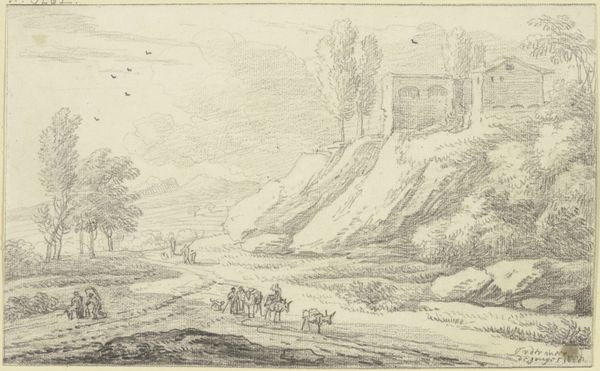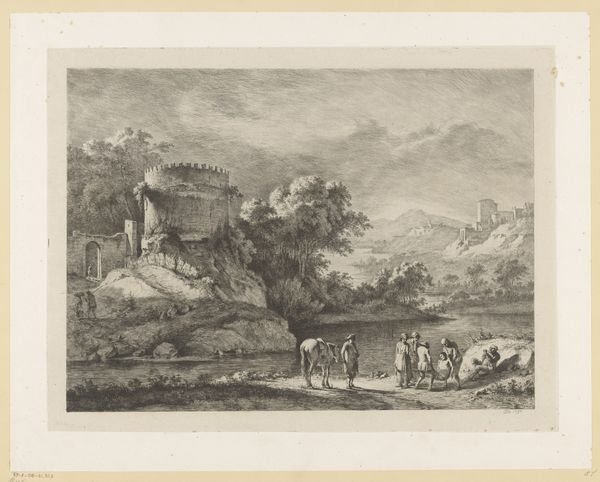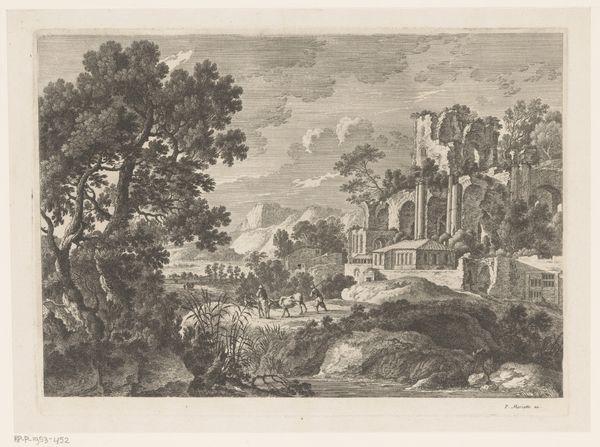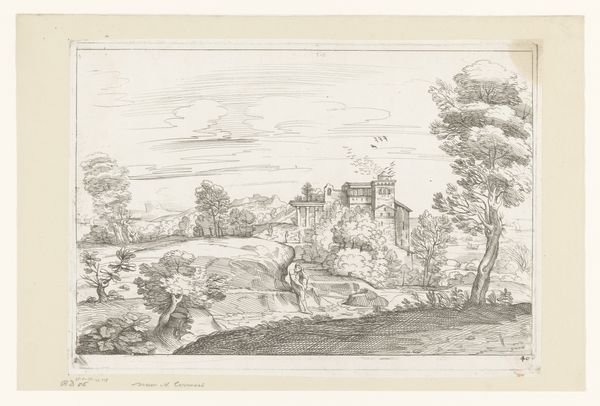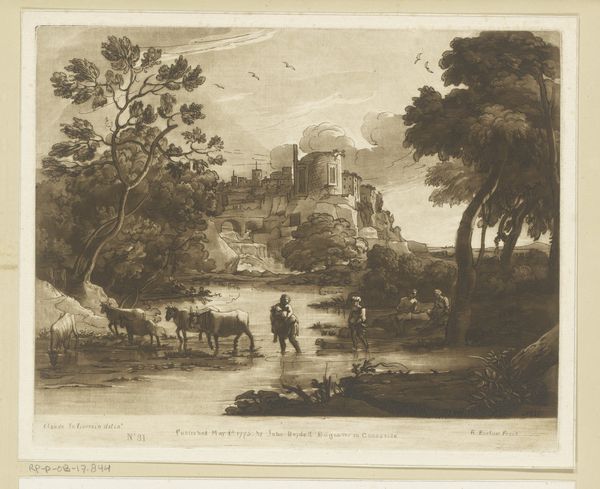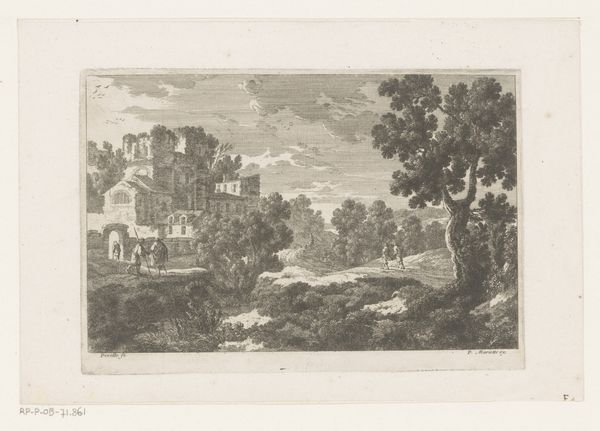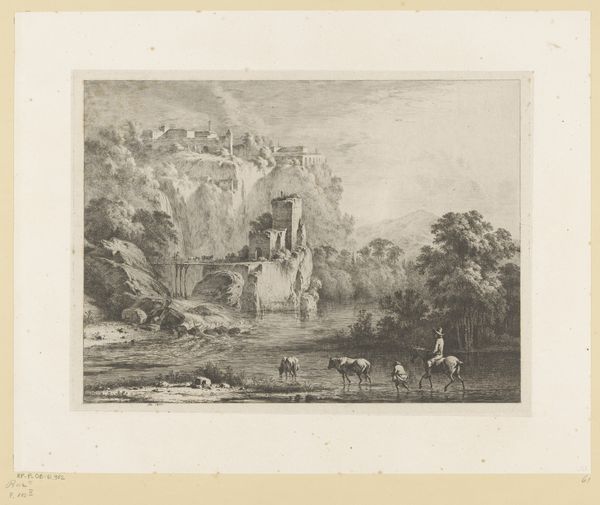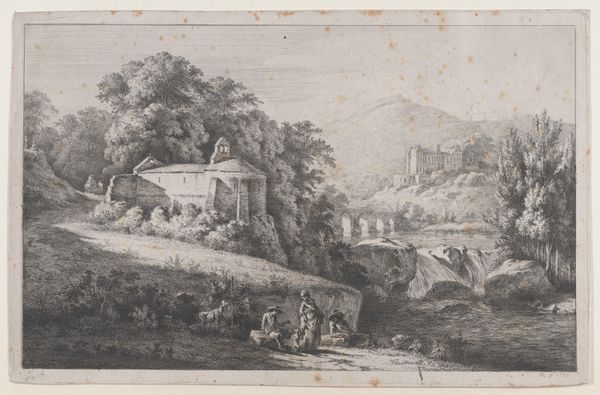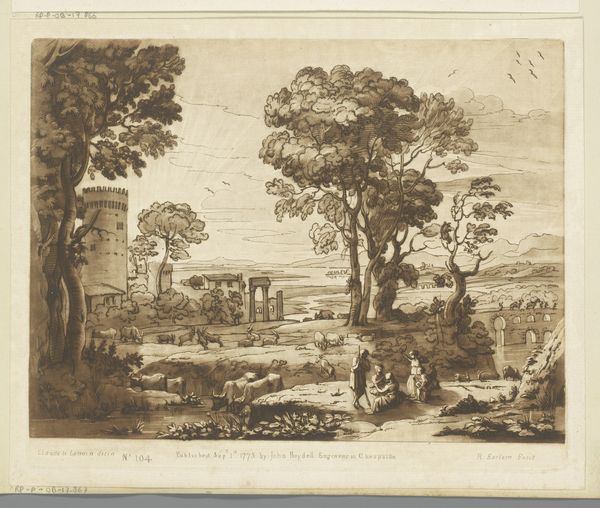
drawing, print, etching, engraving
#
drawing
#
neoclacissism
#
ink painting
# print
#
etching
#
landscape
#
engraving
Dimensions: Sheet: 11 1/8 × 14 13/16 in. (28.2 × 37.6 cm)
Copyright: Public Domain
Curator: We're standing before Jean-Jacques de Boissieu's "View of the Temple of Vesta," crafted in 1774. It's currently held at the Metropolitan Museum of Art. A complex print made via etching and engraving. Editor: It has the hazy quality of a dream, or maybe just heat shimmering off old stones. Ruins bathed in light, rendered with incredible delicacy. Do you get a feeling of melancholy looking at it? Like beauty fading? Curator: Definitely, that sentiment resonates with Neoclassical art which harkens back to the grand forms of antiquity. Think about how printmaking facilitated the circulation of these classical ideals, taking Roman visions to a wider audience. The material process is very important in democratizing access. Editor: That's interesting! It almost feels like this romantic gaze onto a ruin transforms the labor involved; an idyllic vision arises as one considers the repetitive and careful process that would give form to this precise depiction of an Arcadian vision. The animals seem almost carelessly added, in contrast with the meticulous detail given to the architecture, like, oh here comes real life into the composition! Curator: These idyllic scenes were incredibly fashionable among the European elite; such pieces operated within a network of trade and taste. I wonder how Boissieu adapted his technical skill, to meet demands of the print market. He transforms, cheapens, or heightens its impact. It also places labor as more of a commodity, doesn’t it? Editor: The layering of tones adds real depth. I am picturing de Boissieu working on the etching plate with incredible patience. Maybe it's less about the labor becoming a commodity and more about art's accessibility and influence through it. It's almost as if the Temple becomes accessible through de Boissieu. I feel as if a gate has opened, allowing me into an artist's consciousness as well. Curator: Perhaps the most romantic gate that capitalism can devise, yes? To think about the image of a structure that inspired the artist—transposed through an arduous, manufactured process is very important in itself. The image's function—aesthetic, economic, or something in between, can vary between its various social spheres, in both past and present! Editor: It does provide endless points to explore. I love the way this piece feels both meticulously rendered and somehow effortlessly dreamlike! It gives me room to breathe and imagine what stories could emerge out of it.
Comments
No comments
Be the first to comment and join the conversation on the ultimate creative platform.


